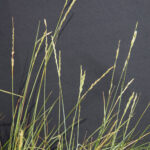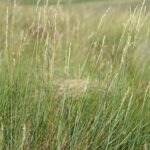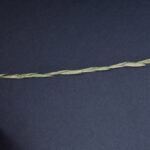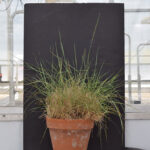Northern Wheatgrass
Elymus lanceolatus ssp. lanceolatus
General Description
Northern wheatgrass is a native sod forming perennial grass. Single stems of northern wheatgrass grow from slow spreading rhizomes. Multiple stems and shoots are often found close to each other. Leaves point almost straight up and are firm and rough. Northern wheatgrass is found in native plant communities throughout the prairies provinces across many native plant communities. The streambank wheatgrass subspecies tends to be smoother, shorter and have more aggressive rhizomes.
Type
Native grass.
Origin
Mixed grass prairie. Northern wheatgrass and streambank wheatgrass are now considered by botanists as the same species but of different subspecies.
Longevity
Long-lived.
Use
Reclamation, pasture, hay. Can be cut for hay but yields are low and regrowth is slow compared to other tame forage species.
Optimal Time of Use
Spring, summer, fall, winter. Cut northern wheatgrass for hay before flowering for the best quality. Northern wheatgrass is best used for grazing starting in mid-June. Quality declines in the fall.
Recovery After Use
For maximum persistence graze northern wheatgrass once per season. Recovery can occur within 60-80 days in cultivars.
Palatability/Nutritional Value
Northern wheatgrass is palatable and has an average digestibility of 45% throughout the year and crude protein levels drop from 20% in May to 4% in September. Mature stems may be less preferred by livestock, so therefore, avoided.
Annual Precipitation min/max (mm)
203mm / 635mm
Drought Tolerance
Excellent tolerance.
Flooding Tolerance
Can withstand 1-2 weeks of spring flooding.
Winter Hardiness
Excellent hardiness.
Soil Texture Preference
Best suited to dry, coarse loamy to clay-loam soils but it may establish on sandy sites.
Erosion Control
High erosion control. Northern wheatgrass has good establishment from seed, vigorous seedlings, deep roots and sod forming rhizomes.
Salinity Tolerance
Moderate tolerance.
Acidity Tolerance
Low tolerance.
Alkalinity Tolerance
Moderate tolerance.
Seeds per kg
320,000 seeds/kg (145,000 seeds/lb)
Suggested Mixtures
Native species including other wheatgrasses and needlegrasses. Highly competitive tame species are not recommended. Add a percentage of legumes for greater biodiversity and nitrogen fixation.
Ease of Establishment
Seedlings tend to be vigorous and establish quickly.
Competitiveness
Northern wheatgrass is competitive, forming a loose sod when well established. Northern wheatgrass rhizomes tend to be less aggressive than streambank and western wheatgrass.
Management Considerations
Ensure adequate rest for recovery following defoliation.
Saskatchewan Dryland Forage Species Adaptation Tool, AAFC Field Guide to Selected Native Forages, USDA Plants Database, Manitoba Forage Adaptation and Comparison Guide
Northern wheatgrass is found in native grassland communities in the Peace-Liard region, sometimes with slender wheatgrass, western porcupine grass, and western wheatgrass.



